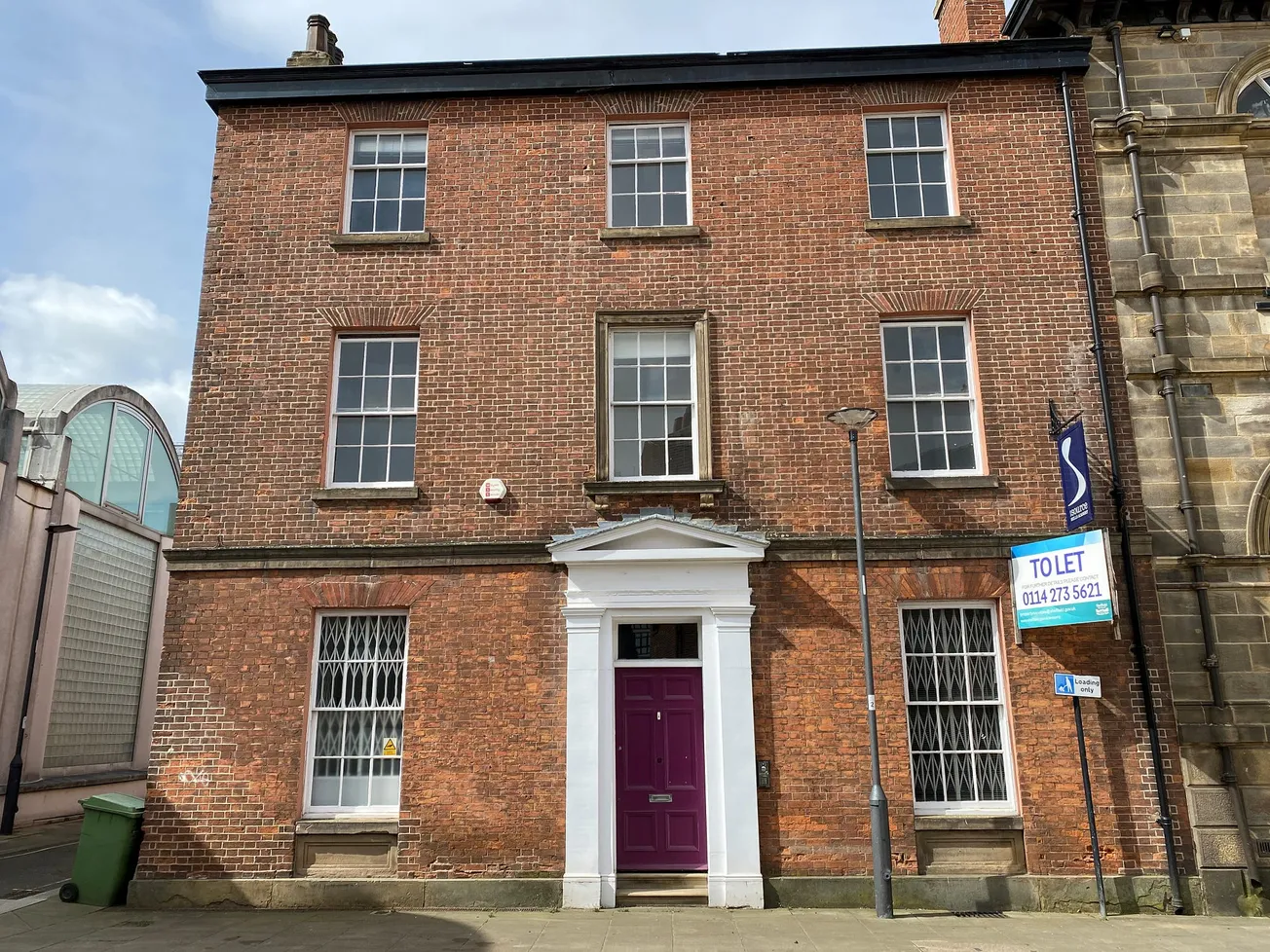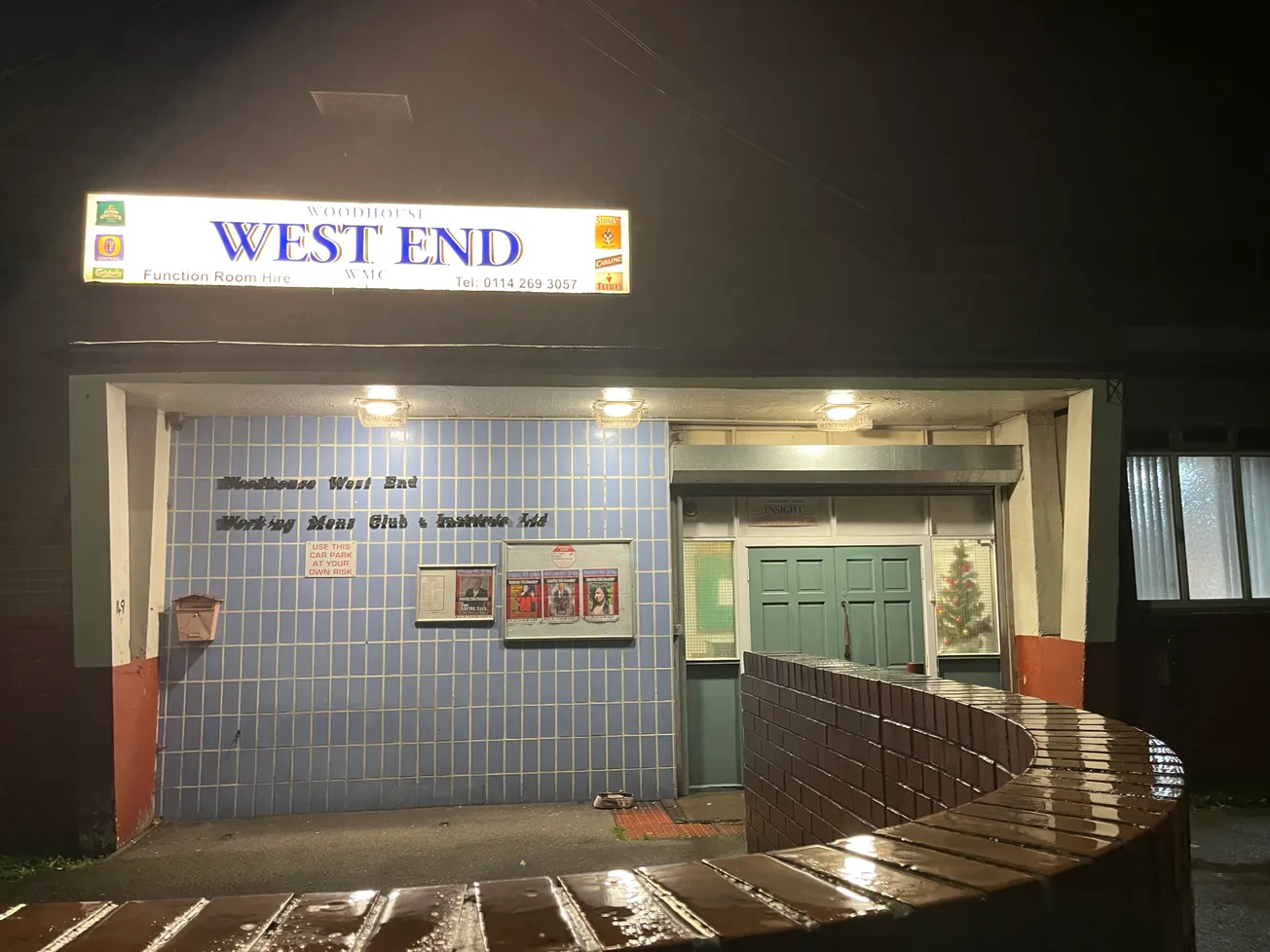Dear Tribune readers (‘Tribbers' as you shall henceforth be known) — our weekend read today is about 2 Surrey Place, a building that sits just round the corner from Sheffield Town Hall.
Thomas McGrath — who is a university history researcher when he’s not writing for us — has unearthed old newspaper advertisements and other records showing that the building has a very interesting past, and one that sheds new light on Victorian society in Sheffield.
If you think someone you know might enjoy today’s story, please do forward it to them and tell them about The Tribune. As a new and tiny operation, we are very reliant on your help in spreading the word. Thanks to all of those who have already told friends about us. You can also use the button below to share the online version of the newsletter via text, groupchats or on social media.
If you aren’t on our mailing list, join it now to get high-quality local journalism about Sheffield and South Yorkshire in your email inbox, or come on board as a member to receive all our stories.
Number 2 Surrey Place is a lovely but unassuming Georgian house, not particularly remarkable alongside the others that line Sheffield’s streets. Its brickwork facade is neat and well ordered, and the elegant cornice above its doorway projects respectability.
The building is currently available for rent as offices — price on application. “A Grade II listed property arranged over three floors which has been comprehensively refurbished,” the listing says. “The property has been more recently utilised as a training centre with offices and incorporates a reception area and cafe.”

In the perfunctory description, no mention is made of the building’s extraordinary history and the ailments that were treated inside its old walls. Given the nature of those ailments, perhaps that’s understandable.
‘With the greatest secrecy and honour’
Historically Number 2 Surrey Place was Number 2 Eyre Street. Until the mid-eighteenth century, this part of town was an expanse of open countryside known by the locals as Alsop Fields. Around 1775 the ninth Duke of Norfolk commissioned plans to turn these fields into an elite residential development which would appeal to wealthy manufacturers, but the plans stagnated. Eyre Street, which was named after the Duke’s agent, Vincent Eyre, was laid out at this time and around 1830 Number 2 was built.
In 1838 Dr James Hallett (1792-1852) moved into 2 Eyre Street with his wife, their daughter and servants. Hallett was a surgeon from Dorset who had worked in London before he moved to Sheffield in the early 1820s. Hallett specialised in the treatment of sexually transmitted diseases, more commonly referred to as venereal diseases at the time. By 1827 he made the somewhat dubious claim that he had treated thousands of people over a career spanning twenty years, which means he would have started this profession around the age of 15.
As a relatively new arrival in the town, Hallett had to be careful how he advertised his services to avoid offending polite society or endangering his reputation. In his early newspaper advertisements, he was both cautious and boastful. He was careful to avoid directly stating what diseases he treated but he did give a list of various symptoms which the afflicted reader would recognise. Alongside these was an acrostic poem spelling out ‘DOCTOR HALLET’ (presumably they could not find anything to rhyme with the last ‘t’ of his surname). In the poem it is claimed that his services were akin to a ‘second birth’.

By 1832 Hallett’s business was thriving. He was so confident in his abilities and in his medicines that he no longer skirted around naming diseases. In the Sheffield Independent his front-page advertisements stated that his Golden Anti-Venereal pills had raised thousands of people ‘from the brink of the grave’ and the pills could be used to treat scurvy, scrofula, leprosy and lues venerea (syphilis). His Neapolitan Pills could apparently ‘cure’ gonorrhoea, discharge, weaknesses, pains of the loins and kidneys and afflictions of the bladder.
The term Neapolitan was used often used as a byword for venereal diseases, and it stems back to the French invasion of Italy in 1495, where the invading army caught and spread numerous diseases including syphilis. Boxes of these pills could be purchased discreetly at 2s./9d. or 4s./6d. from Hallett’s dispensary on Eyre Street or through the post provided money and a pre-paid return envelope was included. Each box contained instructions and was marked with Hallett’s seal for authenticity.
There was no known cure for syphilis or gonorrhoea in the nineteenth century and remedies, pills and potions which could subdue the symptoms were popular. Unlike some of his competitors, Hallett was eager to show that his pills were herbal-based rather than mercury-based, which in itself was toxic.

‘The Itch Cured in One Hour’
Among Hallett’s neighbours on Eyre Street in the 1841 census were physicians and a clergyman, so his reputation does not appear to have been damaged by his profession. Hallett was not the first, nor was he the last, to offer cures for sexually transmitted diseases in Sheffield.
As early as 1789 advertisements were placed in the Sheffield Register offering treatments for gonorrhoea, aimed specifically at ‘captains and others going abroad’. Hallett’s successors at 2 Eyre Street in the 1850s and 1860s, Dr David Davieson and Mr Perry, also offered treatment for these diseases. Both Davieson and Perry had consulting rooms at their home, with a private entrance on Cadman Lane and both men were available for consultations seven days a week. Perry’s wife was also available for private consultations with women.
Hallett, Davieson and Perry were successful in their line of business because it preyed on the fears and desperations of the public. One of Hallett’s advertisements noted that his pills were aimed at ‘Youth of either Sex who have practised secret vice, and thereby relaxed and debilitated the whole nervous system’. Its message ties into nineteenth-century fears of sexual promiscuity and immorality, and the linking of disease with physical and mental illness. However, the decades-long presence of these men on Eyre Street suggests that there was a buoyant market in Sheffield and beyond for their services. Their presence and success would seem to challenge our broad preconceptions of prudish, uptight Victorians.

The rapid increase in the population of Sheffield — which had more than doubled from around 60,000 people in 1801 to over 134,000 in 1841 — allowed for unprecedented human interaction and temptations. Whilst Hallett’s advertisement would suggest that it was promiscuous young people in need of his treatments, venereal diseases were a problem for the whole population, rich or poor, married or single.
Research by the historian Gail Savage has shown that numerous petitions for divorces filed between 1858-1901 cited venereal disease as a cause for separation. Often this was passed from one spouse to the other, likely the husband to the wife, and perhaps unwittingly, especially if they were duped into one of the ‘cure all’ pills sold by Hallett and others.
To get Sheffield stories like this in your inbox every week, join our mailing list
Venereal diseases were also prevalent in the armed forces and the introduction of the Contagious Diseases Act in 1864 attempted to correct this. Under the Act any woman suspected of being a prostitute in specific port towns and barrack towns could be taken for an intrusive internal examination and if she was found to be diseased, she could be confined to a lock hospital for up to three months, which was later extended to 12 months in 1869.
Unmarried women who found themselves pregnant may well have visited Eyre Street too. Of all recorded births in Sheffield in 1862, 5.4% were of illegitimate children. This figure was slightly higher than in Bradford, where it stood at 5.1% but lower than Leeds which was 5.9%

‘The licentiousness of men’
In January 1866 the body of a dead baby girl was left on the doorstep of Number 2. The child had been born alive, but she had been killed by a blow to the head. The placement of the body does not seem to be a coincidence, especially as it turns out Perry and his wife had no medical training, he was not a surgeon and his real name was Enoch Percival.
There are many possible reasons why the child was murdered and left there. Perhaps the mother had been one of Perry’s patients and his ‘cures’ had not worked. By the mid-nineteenth century unmarried mothers and their illegitimate children faced overwhelming social ostracization by all classes. The 1834 Poor Law Amendment Act had revoked parish ‘relief’ (funds) for the support of illegitimate children. Under the Act, the suspected father was released from any liability and instead all liability, and as such blame and stigma, was placed on the mother. Her parents were also expected to help. This was done with the intention ‘to effect a greater degree of morality’ and prevent more illegitimate births.
In Sheffield, the Act was regarded as unjust, and it was noted that it would just ‘encourage the licentiousness of men’ whilst women would be ‘deprived of assistance and left to struggle with poverty.’ It was discovered one-sixth of mothers of illegitimate children in Sheffield in 1834 could not afford to support their children and from a sample of 20 families, none had maternal grandparents who could afford to support the daughter and grandchild/grandchildren. It is little wonder some women turned to desperate measures such as infanticide to avoid motherhood.
Although Hallett, Davieson and Perry lived and worked on Eyre Street for four decades this does not mean that their pills and remedies were effective in the treatment of Sheffield’s sexually transmitted diseases. At best they probably acted as placebos until the disease was passed to a new partner or it reappeared.
This was the case with some late-stage syphilis cases, which after lying dormant for years or even decades, suddenly re-emerged and attacked the body’s nervous system, bones and soft tissue which led to tumours, deep ulcerations on the face and the rotting away of the nose, seizures, blindness, dementia and eventually, death.
Given the ways these diseases could lie undetected, who would have complained publicly if Hallett’s Neapolitan Pills didn’t work?
Join The Tribune’s mailing list to get stories like this in your inbox every week.
Thomas McGrath is a researcher at Manchester Metropolitan University. His research focuses on domestic settings in the eighteenth, nineteenth and twentieth centuries, and you can read more of his work on his blog.
Our suggestions for further reading:
- Ruth Harman, John Minnis, Roger H. Harper, Pevsner Architectural Guides: Sheffield, (London and New Haven: Yale University Press, 2004)
- Kate Lister, A Curious History of Sex, (London: Unbound, 2020)
- Gail Savage, ‘The Wilful Communication of a Loathsome Disease: Martial Conflict and venereal Disease in Victorian England’, Victorian Studies, Vol. 34, No. 1, (Autumn 1990), pp.35-54
- John Firth, Syphilis – Its early history and Treatment until Penicillin and the Debate on its Origins.
- Kate Lister, Sex and Syphilis, 30 April 2019,
If you know of a story we should be reporting on, please hit reply to this newsletter or email editor@sheffieldtribune.co.uk.
If someone forwarded you this newsletter, click on the button below to join our mailing list and get thoughtful Sheffield journalism in your inbox.
Comments
How to comment:
If you are already a member,
click here to sign in
and leave a comment.
If you aren't a member,
sign up here
to be able to leave a comment.
To add your photo, click here to create a profile on Gravatar.







